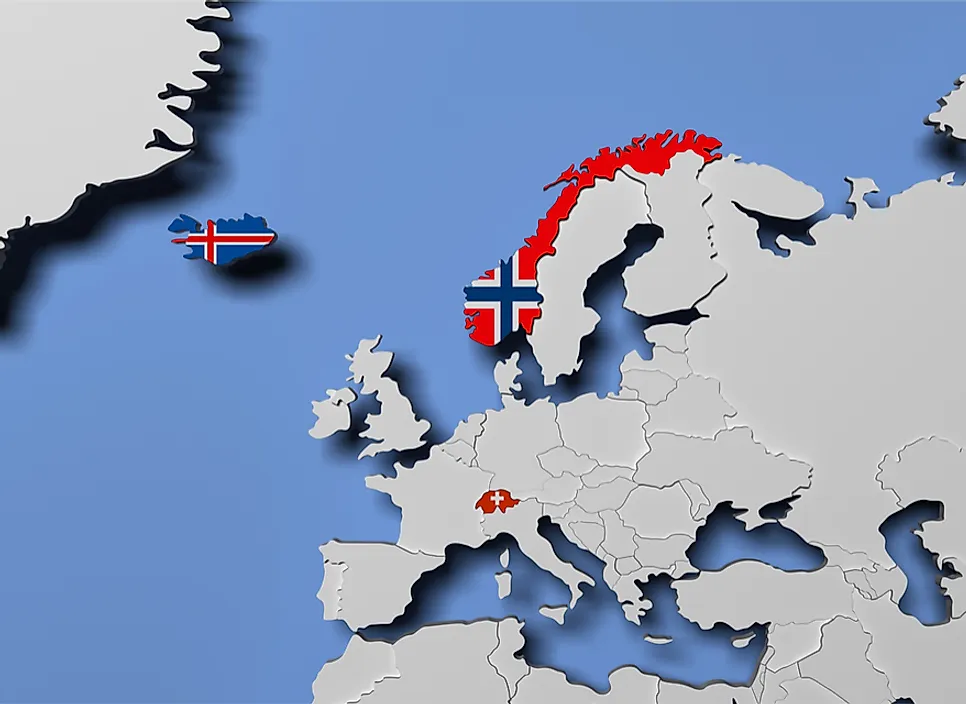What Is the European Free Trade Association (EFTA)?

The European Free Trade Association, known simply as the EFTA, consists of four member nations: Norway, Switzerland, Liechtenstein, and Iceland. Together, these nations cover a combined area of 204,500 square miles and have a population size of approximately 13.58 million. The average gross domestic product (GDP) per capita within this trade area is reported at $58,714, which equals about $44,828 when adjusted for purchasing power. The official language of the EFTA is English, which is used in meetings and governing documents, although a total of 7 official languages are spoken by the member nations. The EFTA is headquartered in Geneva, Switzerland.
Administration of the European Free Trade Association
The ETFA works to promote trade and make trade easier among its member states. The EFTA Council serves as its governing body, and its delegation leaders convene 8 times a year and its ministers meet twice a year. During these meetings, administrators decide upon amendments to current trade regulations and work to develop new trade policies. Each member state has one vote, and changes or regulations are made on a majority basis. Throughout its history, however, most decisions made by the EFTA have been with total consensus.
The ETFA Council is supported by the Secretariat, which is led by the Secretary-General and two Deputy Secretaries-General. Its staff is divided among Luxembourg, Brussels, and Geneva. The staff in Luxembourg are dedicated to the inclusion of EFTA members in the European Statistical System, while Secretariat employees in Brussels work on documents required for EFTA member states to participate in the European Economic Area. The Geneva office serves as both the EFTA headquarters and negotIates trade agreements with countries that do not belong to the European Union.
In addition to administering the trade region's imports and exports, the EFTA also allows member states to enter into trade agreements and arrangements with nations outside of the trade area. All EFTA members also belong to the European Economic Area (EEA), with the exception of Switzerland. Members are also permitted to take part in the Internal Market of the European Union, but are prohibited from taking part in the EU Customs Union.
History of the European Free Trade Association
The EFTA was established in January of 1960, through the signing of a trade agreement at the Stockholm Convention held in the Prince’s Palace in Stockholm, Sweden. The founding members of the EFTA were: Norway, the United Kingdom, Switzerland, Sweden, Austria, Portugal, and Denmark. Its establishment was in response to the exclusion of its founding members from the European Economic Community, which later developed into the present-day European Union. One of the first benefits established by the EFTA was the removal of customs or taxes on industrial goods. This removal was not immediate, but rather took place over a specified timeline. Although similar in intent and function, the EEC and EFTA did have one initial principal difference. The EFTA, for example, allowed its member nations to negotiate trade agreements with non-member countries independently. Each member, therefore, held varying customs duty agreements with other nations.











